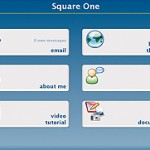With the rise of the over 50s as a demographic that marketers would like to target, finally we have computer makers designing a computer for people who are not comfortable negotiating a complex file management system or a desktop full of icons.
Simplicity Computers have introduced a computer with a simple navigation interface (Square One – couldn’t they have found a better name?) and built-in video tutorials that are clear and easy-to-understand.
This got me thinking that designing a good message for a presentation is all about simplicity. Being simple is not easy. And being concise can take a lot of preparation. The next time you prepare a presentation, ask yourself, “What is my message?” Is it concise? Could someone over 50 or under 10 years of age understand it?
Simplicity means cutting out the jargon, and acronyms. Simplicity is about reducing a concept to its simpliest terms (without being patronising). Simple messages are easy to transfer.
David Pogue – an advocate for simple design – also has a speech called “Simplicity Sells” delivered at TED Talks.






